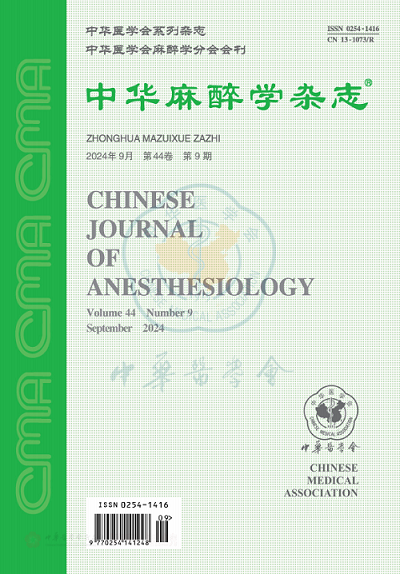Efficacy of ultrasound-guided quadratus lumborum block versus transversus abdominis plane block for analgesia after lower abdominal surgery: a meta-analysis
Q4 Medicine
引用次数: 0
Abstract
Objective To systematically review and compare the efficacy of ultrasound-guided quadratus lumbosum block (QLB) and transverse abdominis plane block (TAPB) for analgesia after lower abdominal surgery. Methods Pubmed, Embase, The Cochrane Library, ISI Web of knowledge, Chinese biomedical literature database, Chinese science and technology journal full-text database, Chinese journal full-text database and Wanfang database were searched by a computer from the date of database establishment up to May 2019.Randomized controlled trials involving the efficacy of ultrasound-guided QLB and TAPB for analgesia after lower abdominal surgery were included in this study.The primary outcome was visual analog scale scores at rest and during activity at each time point after operation, and the secondary outcome was the incidence of adverse reactions (nausea and vomiting, dizziness, pruritus). The two researchers selected the literature and extracted the data according to the inclusion criteria, independently evaluated the quality of the included literature according to the relevant criteria recommended in Cochrane reviewers′ manual 5.1.0, and conducted a meta-analysis using RevMan 5.3. Results A total of 16 randomized controlled studies involving 1 218 patients were included, including 608 cases in QLB group and 610 cases in TAPB group.The results of meta-analysis showed that the visual analog scale scores at rest at 2, 4, 6, 12 and 24 h after surgery and during activity at 8 and 12 h after surgery and the incidence of nausea and vomiting were significantly decreased in QLB group as compared with TAPB group (P<0.05). Conclusion QLB can provide better early postoperative analgesia than TAPB with a lower risk of adverse reactions. Key words: Nerve block; Psoas muscles; Abdominal muscles; Analgesia; Meta-analysis超声引导腰方肌阻滞与腹横肌平面阻滞用于下腹手术后镇痛的疗效:一项荟萃分析
目的系统评价和比较超声引导腰方肌阻滞(QLB)和腹横平面阻滞(TAPB)用于下腹手术后镇痛的效果。方法Pubmed、Embase、The Cochrane Library、ISI知识网、中国生物医学文献数据库、中国科技期刊全文数据库、,从数据库建立之日起至2019年5月,通过计算机检索中文期刊全文数据库和万方数据库。本研究包括超声引导下QLB和TAPB用于下腹手术后镇痛的随机对照试验。主要结果是术后每个时间点休息和活动时的视觉模拟量表评分,次要结果是不良反应(恶心呕吐、头晕、瘙痒)的发生率。两位研究人员根据纳入标准选择文献并提取数据,根据Cochrane评审员手册5.1.0中推荐的相关标准独立评估纳入文献的质量,并使用RevMan 5.3进行荟萃分析。结果共纳入16项随机对照研究,涉及1128例患者,其中QLB组608例,TAPB组610例。荟萃分析结果显示,视觉模拟量表在休息时的评分分别为2、4、6、8、10分,与TAPB组相比,QLB组术后12、24 h及术后8、12 h活动时恶心呕吐发生率均显著降低(P<0.05)。关键词:神经阻滞;Psoas肌肉;腹肌;镇痛;Meta分析
本文章由计算机程序翻译,如有差异,请以英文原文为准。
求助全文
约1分钟内获得全文
求助全文

 求助内容:
求助内容: 应助结果提醒方式:
应助结果提醒方式:


